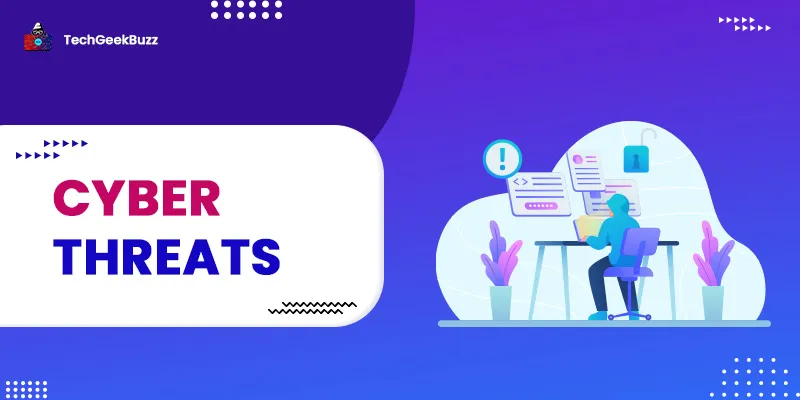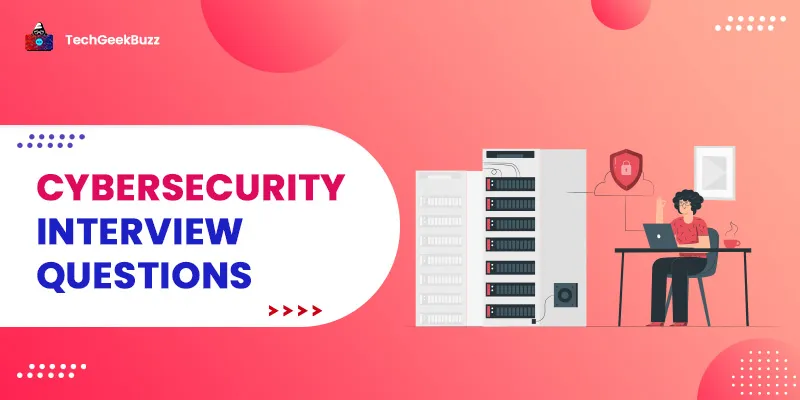The widespread use of the internet and electronic media has resulted in countless events of data breaches, malicious attacks, frauds, etc. Such incidents are sometimes devastating and can cause a great loss.
With the rise of security threats, it has become essential to keep the web a safe place for everyone, and this is where cybersecurity comes into the picture. In this article, we will introduce you to the concept of cybersecurity.
Moreover, it will answer all your questions related to cybersecurity, like why is cybersecurity important, what are different types of cybersecurity threats, and what are some major cybersecurity challenges.
What is Cybersecurity? [Definition]
Cybersecurity, also known as Information Technology Security or Electronic Information Security, is the practice of protecting internet-connected systems, like mobile phones, servers, electronic systems, computers, and networks from cyber threats . Every organization and business, and even individuals, today follow certain cybersecurity practices with an aim to protect their systems, networks, and data from unauthorized access.
Cybersecurity measures are designed in such a way that they combat cybersecurity threats originating inside or outside an organization. However, good cybersecurity practices are not enough to protect your systems or data from threats. Instead, a cybersecurity strategy is what you need as it plays a crucial role in safeguarding your precious data and systems. A cybersecurity strategy is developed by organizations that define how they will utilize cybersecurity measures to protect their assets.
An ideal cybersecurity strategy ensures multiple layers of protection. It helps to attain a sound security posture against various cybersecurity threats intended to access, steal, delete, or manipulate sensitive data. Moreover, cybersecurity plays a vital role in preventing threats intended to make a system inoperable.
Why is Cybersecurity Important?
Today, every aspect of the digital world is immensely dependent on the internet. Thus, attackers have immense opportunities to hack internet-based systems or networks. Also, the increasing cyber crimes have made organizations and individuals concentrate on cybersecurity.
With data being of the utmost importance, it becomes necessary to protect it from all kinds of threats. Data can be personal data, protected Health Information (PHI), personally identifiable information (PII), government and industry information, and intellectual property. Cyberattacks are threatening at every level, may it be individual or organizational.
Therefore, cybersecurity plays a crucial role to ensure the safety of internet-connected systems.
Elements of Cybersecurity
Various elements of cybersecurity that work collectively to help organizations achieve a sound security posture are listed below:
- Application Security: It involves processes or measures for safeguarding applications running in the cloud and on-premises.
- Cloud Security : It is confidential computing that encrypts data in motion, use, and at rest to ensure customer privacy and business compliance standards.
- Network Security : It involves security practices for defending a computer network, including wired and wireless connections, from malicious attackers.
- Critical Infrastructure Security: It involves security measures for defending networks, computer systems, and other assets that common people rely on for public safety, economic health, and national security.
- End-user Education: Educating people across an organization on how to strengthen endpoint security.
- Information Security: It consists of security measures like General Data Protection Regulation (GDPR) to protect confidential and sensitive data from being stolen or damaged.
- Disaster Recovery: Various tools and techniques that respond to unexpected events like power outages, natural disasters, etc.
Types of Cybersecurity Threats
Though organizations and businesses employ best cybersecurity practices, intruders always try to exploit systems in new ways. Below are some of the latest cybersecurity threats:
1. Malware
It is malicious or intrusive software designed with the aim to damage computers or networked PCs. Malware serves is a single term to refer to various malicious software variants, like worms, Trojans, spyware, and viruses.
2. Phishing
Phishing is one of the most typical cybersecurity threats. In phishing, attackers send fake messages or emails that seem to be coming from an authorized and known source.
3. Ransomware
Ransomware is a kind of malware that blocks a victim’s access to a computer system or data and threatens to erase or exploit it or make it public until the victim pays the demanded ransom fee.
4. Social Engineering
Social engineering involves human interactions to carry out malicious activities. It is a technique where attackers trick or manipulate users into breaking security procedures and accessing sensitive information.
5. Insider Threats
As its name suggests, insider threats can be caused by anyone, like business contractors, former or current employees, or other people who have access to an organization’s systems or networks.
6. Distributed Denial-of-Service (DDoS)
A DDoS attack involves crashing a website, network, or server by overwhelming it with immense traffic from multiple coordinated systems. Alternatively, it is an attack that disturbs normal traffic of a targeted service, server, or network by loading them with immense internet traffic, resulting in a crash.
7. Advanced Persistent Threats (APTs)
In Advanced Persistent Threats, a hacker or groups of hackers access a system or network and remain undetected for a prolonged time. They do not manipulate a system or network and leave them intact in order to keep track of business activities and steal sensitive data.
8. Man-in-the-middle (MITM)
Man-in-the-Middle is a type of eavesdropping attack, where an intruder eavesdrops while two parties communicate with each other; the intention is to intercept and relay messages exchanged between them.
Top 5 Cybersecurity Challenges
It is quite evident that the number of cyberattacks in the future will increase with the arrival of new technologies, like the Internet of Things (IoT) . The more the number of entry points for cyberattacks, the more the need to safeguard systems and networks. Below, we have listed some of the most common cybersecurity challenges:
1. Evolving Nature
Cybersecurity risks have an evolving nature. The development of new technologies and various approaches for using those technologies result in new attack avenues. Therefore, it becomes pretty challenging to cope with these new technologies and update cybersecurity practices to attain a good security posture within an organization.
2. Phishing Continues to be a Problem
Phishing is one of the most effective approaches to access an organization’s systems and network. It is pretty easy for attackers to run malware on an organization’s system or trick employees into giving their sensitive data, like login credentials. Therefore, phishing continues to be one of the most significant cybersecurity challenges.
3. The Exploitation of Remote Access Solutions
The Covid-19 pandemic has forced companies to adopt remote work. Therefore, employees need to access the company’s network, which resulted in the increasing usage of Virtual Private Networks (VPNs) and Remote Desktop Protocol (RDP). This served as a new source for cybercriminals to plan ransomware attacks, access corporate networks, and steal data by exploiting the vulnerabilities of VPN and poor password security.
4. Cloud Adoption
Cloud adoption has increased extensively due to the need for a remote workforce. Cloud-based solutions offer scalability, accessibility, and reliability to businesses and companies to carry out a remote workforce. However, with the rise in cloud adoption, many businesses have become vulnerable to various cybersecurity threats.
For most businesses and organizations, one of the most significant concerns is the security of their public cloud infrastructure. They use cloud services offered by several vendors, and hence, it becomes pretty challenging to secure systems hosted on shared servers in ven-specific environments.
5. Shortage of Qualified Cybersecurity Personnel
Businesses collect a vast amount of data every day, and therefore, there is an immense need for cybersecurity staff that can analyze and handle this data. Cybersecurity professionals understand the vulnerabilities of an organization's systems or networks and develop new ways to prevent cyber threats.
Conclusion
With the rising risk of cybercrimes, it has become necessary for every organization to adopt the best cybersecurity practices. Therefore, organizations are constantly looking to hire cybersecurity professionals to keep their systems and networks secure.
The cybersecurity domain opens up a wide range of career opportunities for IT professionals and computer specialists. Numerous job roles in this domain are available, such as Security Analyst, Security Engineer, Security Architect, Threat Hunter, and Penetration Tester.
Adopting and maintaining cybersecurity practices offers multiple benefits, such as protecting data and networks from data breaches and unauthorized user access, improved trust for customers, employees, stakeholders, and clients, business continuity, and regulatory compliance.
People are also reading:
![What is Cybersecurity? [Definition, Importance, Types, Challenges]](/media/new_post_images/What-is-Cybersecurity.webp)




Leave a Comment on this Post